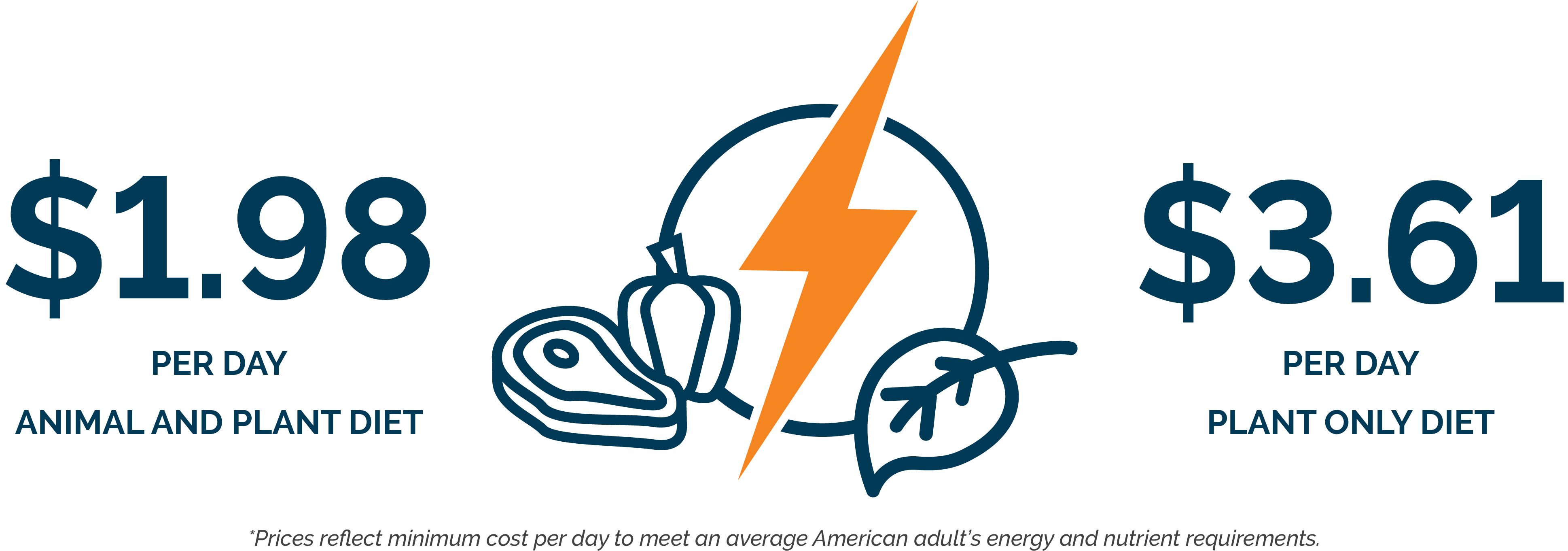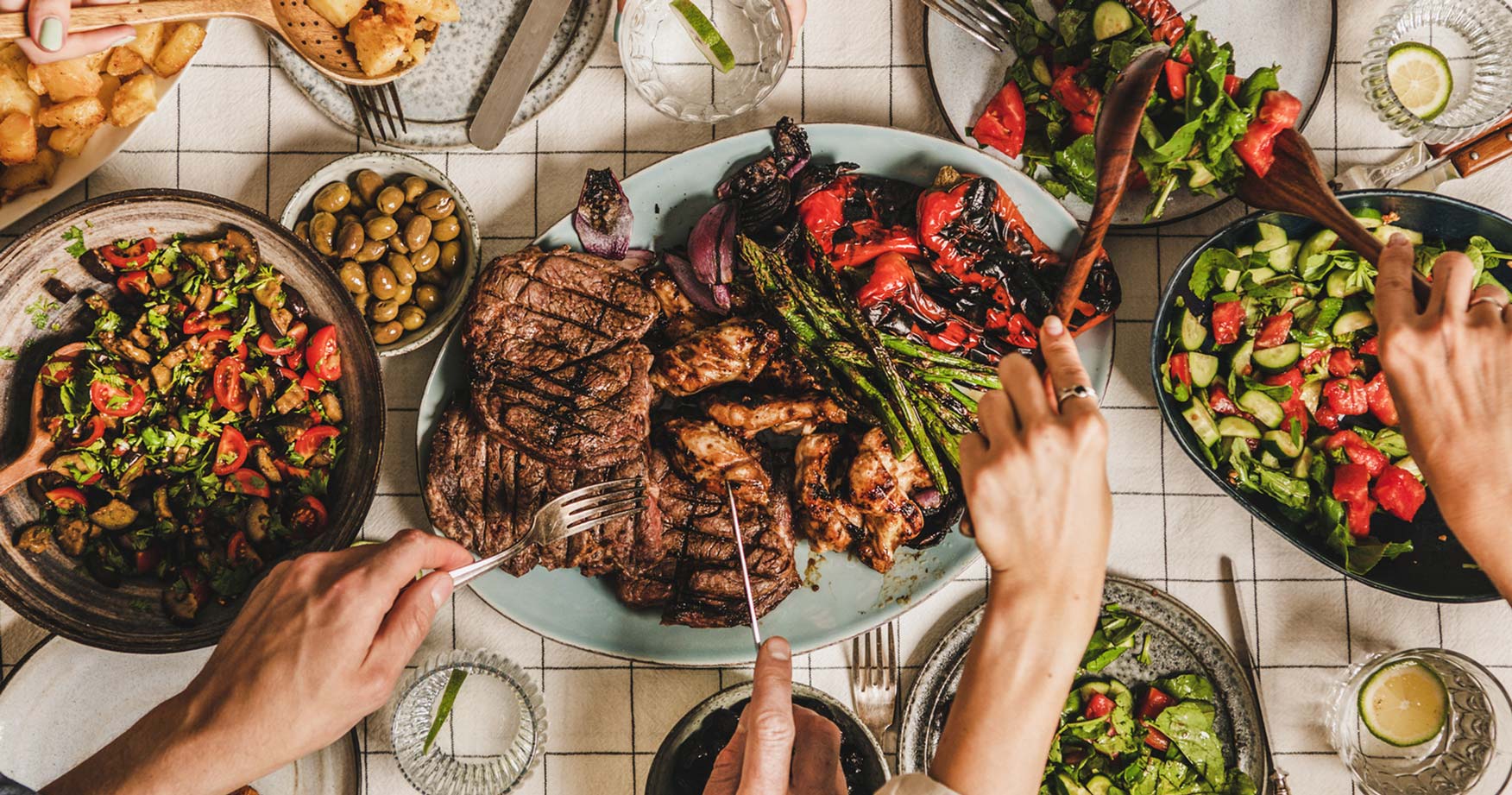In 2020, more than 38 million Americans lived in food-insecure households.1 Given this, one of the first considerations about whether a diet is equitable is if it is attainable for low-income households. A study published in Nature Foods in 2020 found that it would cost a minimum of $1.98 per day to meet an average American adult’s energy and nutrient requirements with a diet consisting of both animal and plant sources. The lowest cost for a plant-only diet in this study was $3.61.2 For low-income households, this difference could easily break their food budget.

It’s also possible (and even common) that consumers are getting enough calories in the day while not getting the correct nutrients to properly fuel their bodies. While there is some evidence that there are health benefits to eating a vegan diet, like a possible modestly lower risk of chronic disease, there are also plenty of deficiencies in a diet like this.
“The large majority of the population enjoys an omnivorous diet,” explained Shalene McNeill, PhD, RD, executive director of nutrition research for the National Cattlemen’s Beef Association. “Including meat makes it a lot easier to ensure adequate intake of key nutrients that are often deficient in vegetarian and vegan diets such as protein, iron and vitamin B12. Healthy diets that include meat and other animal sourced foods with a balance of vegetables, fruits and whole grains are just as healthy, if not healthier, than most vegetarian and vegan diets.”
When talking about the health benefits of different diets, be sure to address the nutrients that meat provides in abundance. For some, it may be difficult to attain the correct mix of macro and micronutrients easily, within a normal calorie allotment.
“When budgets are tight and nutrition needs are high, meat has an advantage because of its nutrient density,” said McNeill. “Meat is more than high-quality protein. Calorie for calorie, meat offers more nutrients than many other foods. This is why newer research on the economics of healthy, sustainable diets is showing that animal source foods, including meats, can actually help make nutritionally adequate diets more affordable.”
The bottom line is that meat-based diets offer great value for the cost, are nutrient dense and able to be sustained, while plant-based diets are still a privilege for many. Meat belongs in a healthy diet and it’s our responsibility to communicate this within our communities. More important than any diet trend is ensuring that every person has access to proper, adequate nutrition at a price they can afford and in a diet they can sustain – which for most people will mean eating meat.
2 Sylvia Chungchunlam et al, Animal-sourced foods are required for minimum-cost nutritionally adequate food patterns for the United States, June 2020
This content originally appeared in the National Institute of Animal Agriculture’s member-only newsletter Paradigm

